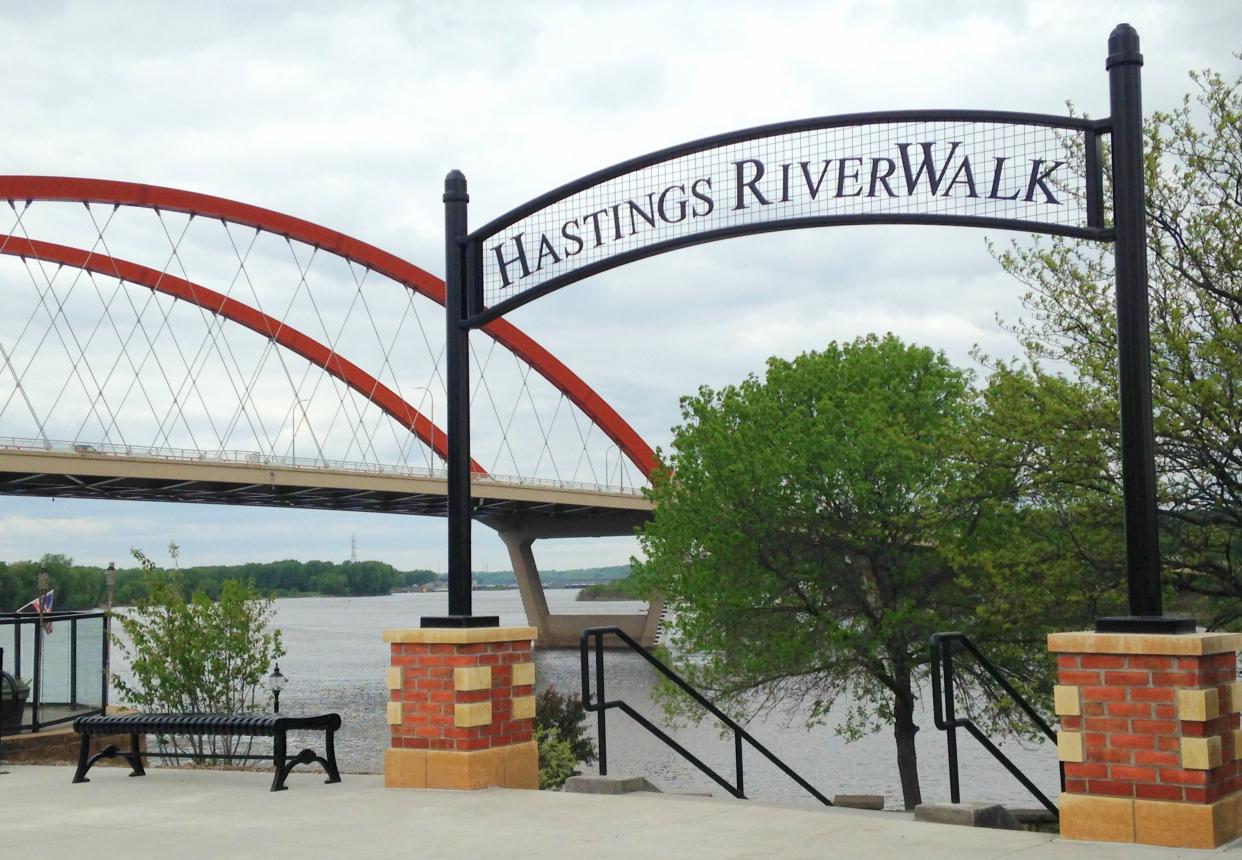Hastings seeks PFAS funding after Legislature sinks bonding bill. But why isn’t 3M paying?

Of Hastings’ six municipal wells, five were determined last month to contain PFAS levels above the new allowable drinking water guidelines set by the Environmental Protection Agency.
The city has been working to stay ahead of the issue and has gotten as far as narrowing down the best solution to remove the “forever chemicals,” but a lack of funding has left them at an impasse, said Ryan Stempski, public works director and city engineer for Hastings.
To get under the new standard of no more than 4 parts per trillion for per- and polyfluoroalkyl substances, the city plans to construct three new water-treatment plants, including water lines that connect to the Minnesota Veterans Home.
Recommended by the results of a feasibility study that was conducted last summer, the three new water-treatment plants will cost an estimated $68.9 million, said Stempski, who is also a senior project manager for engineering firm WSB.
A $3.2 million grant from the Minnesota Pollution Control Agency paid for the design of the plants, Stempski said, but the city is still searching for ways to pay for the lion’s share of the project, which it hopes to complete within three years once funding is secured.
Funding requests have been submitted to state and federal agencies, but the recent closure of the Minnesota legislative session without the passage of the infrastructure bonding bill has Hastings going back to the drawing board, Stempski said.
“We are looking at all funding options and hopefully it doesn’t all fall on the backs of residents or ratepayers,” he said.
One common theme Stempski has heard from residents is: “Why isn’t 3M paying?”
‘We are being treated differently’
The new EPA guidelines are impacting many communities in the eastern part of the metro, where 3M Co. manufactured PFAS substances for use in products ranging from nonstick cookware to firefighting foam.
Following a 2010 lawsuit filed by the office of Minnesota Attorney General Keith Ellison, 3M is required to pay some $720 million to east metro communities to be invested in drinking water and natural resource projects, according to the state.
As a result, Hastings residents are wondering why their city isn’t receiving funds from the 3M east metro settlement like the nearby communities of Cottage Grove and Newport.
In order to access the 3M settlement funding, Stempski said that a direct connection from one of the four disposal sites in Washington County has to be determined.
Related Articles
Environment | The invisible power of ‘nudging’ is leading diners to cut back on meat
Environment | Powerful storms rip through Midwest, bringing tornadoes
Environment | Powerful storms rip through Midwest, bringing tornadoes
Environment | St. Paul, native community break ground on Wakan Tipi Center in Dayton’s Bluff
The MPCA is working on an environmental study to determine the potential sources of the city’s PFAS, Stempski said, which includes looking at fault lines and fractures in the bedrock as potential pathways where the plumes could be coming from, in addition to other scientific studies.
“We are being treated differently in the east metro,” Stempski said. Some east metro communities were listed in the settlement directly, while others were added as the science advanced, he said.
One difference that sticks out to him is that the Mississippi River was thought to be a boundary to the contamination, whereas that does not appear to be the case, he said.
One particular PFAS-related chemical found in one of Hastings’ wells could only come from 3M, said Dan Wietecha, Hastings city administrator. The chemical has been described as a “fingerprint” for 3M, Wietecha said, and could also be used to advocate for the city to receive settlement funding.
“How much science is needed?” Stempski asked.
In the interim
Hastings residents voiced concerns about the safety of the drinking water, its effect on children and their frustrations about a lack of communication from the city at a public meeting earlier this month.
“If we’re residents of Hastings, we deserve clean water. Everybody (does), not just the ones who can afford the expensive filters for your homes,” said one resident at the May 9 meeting.
As of now, Stempski said the city is encouraging residents to assess their own individual risk levels. Certain populations, like those pregnant and nursing, immunocompromised or households with children, should talk to their doctors, Stempski said.
Those with concerns can buy bottled water, install filters designed to remove certain PFAS chemicals or buy on-the-counter water filters. The Environmental Working Group, a research nonprofit, has composed a list of their top-rated water filters that reduced the presence of PFAS.
“The city is left out on an island,” Stempski said. “We don’t have any funds available to help with those short-term solutions.”
Hastings and the Minnesota Veterans Home are two of 22 water systems in the state – 10 in the metro area and 12 others statewide – put on notice after the EPA standards were announced.
Related Articles
Environment | Pioneer Press 2024 patio guide has something for everyone
Environment | Here are readers’ picks for 2024’s best patios
Environment | Pedestrian struck last week on South Robert Street in West St. Paul dies
Environment | Recently rebuilt segment of South Robert Street could receive additional safety improvements; residents invited to weigh in
Environment | Eagan Art Festival to celebrate 30th anniversary with art fair June 22 and 23

